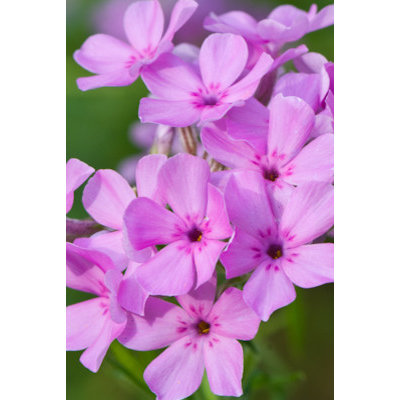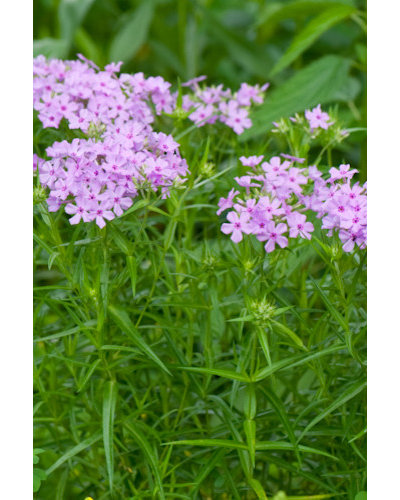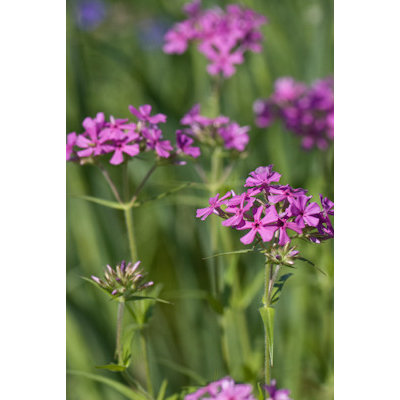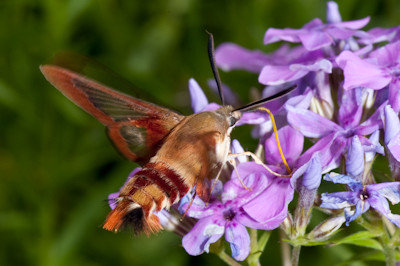The splashes of bright pink, fragrant flowers of prairie phlox are a welcome addition to any landscape border or edge. This is an extremely adaptable native plant that thrives in most soil types, except pure sand or pure clay. The long-lasting flower clusters attract butterflies and moths in particular; these long-tongued pollinators visit to feed on the flower’s nectar. Prairie phlox flowers in early spring before cool-season prairie grasses begin to compete for light and real estate, maximizing its potential to attract pollinators.

Holm Design & Consulting LLC
Botanical name: Phlox pilosaCommon names: Prairie phlox, downy phlox
Origin: Native to eastern North America from Saskatchewan south to Texas and eastward to Ohio, New York and Connecticut in the north and Florida in the south
Where it will grow: Hardy to -45 degrees Fahrenheit (USDA zones 2b to 9a; find your zone)
Typical plant communities: Prairies, rocky openings, savannas and woodland edges
Water requirement: Medium, well-drained soil; sandy loam to loamy clay
Light requirement: Full sun to partial sun
Mature size: 6 to 24 inches tall and 8 to 18 inches wide
Benefits and tolerances: Tolerates most soil types
Seasonal interest: Prairie phlox flowers in the spring between April and mid-June; its flower color can range from a light pink (almost white) to dark pink; the flowers have a mild, sweet fragrance
When to plant: Spring or fall

Holm Design & Consulting LLC
Distinguishing traits. Prairie phlox has fine white hairs on its long, linear leaves. The linear foliage is finely textured and has an airy appearance. The flowers are clustered on the flower head and provide a colorful, bright display.
How to use it. Mature plants have a bushy, mounding form and can be spectacular when massed. Use them along the edge of a planting, such as at the front of a retaining wall, patio or sidewalk. Another good use is on a public boulevard; the short stature complies with most height requirements in municipal ordinances. Combine it with larger-leaved perennials to create a pleasing contrast in foliage textures.

Holm Design & Consulting LLC
Planting notes. Prairie phlox can be difficult to grow from seed. The light brown seed capsules split open and eject the seeds, making collection difficult. It is easier to transplant any seedlings in early spring or fall to a desired location or purchase small container-grown plants from a local native plant nursery.

Holm Design & Consulting LLC
Pollinator notes. The flowers have long, narrow throats and are therefore restrictive to most pollinators, except for those with long mouthparts. Dark pink lines around the flower opening act as nectar guides; nectar is secreted at the bottom of the flower. Prairie phlox is a preferred flower of butterflies and moths. As they insert and then remove their long proboscis in the flower, their mouthparts pick up pollen grains from the anthers in the flower corolla. (You can see pollen stuck to the moth’s proboscis in this photo.) When their mouthparts recoil, most of the pollen falls off. Any remaining pollen grains are transferred to the next prairie phlox flower probed. Prairie phlox flowers are self-incompatible and therefore rely on butterflies and moths for cross-pollination.
Shown: A hummingbird clearwing moth (
Hemaris sp)





